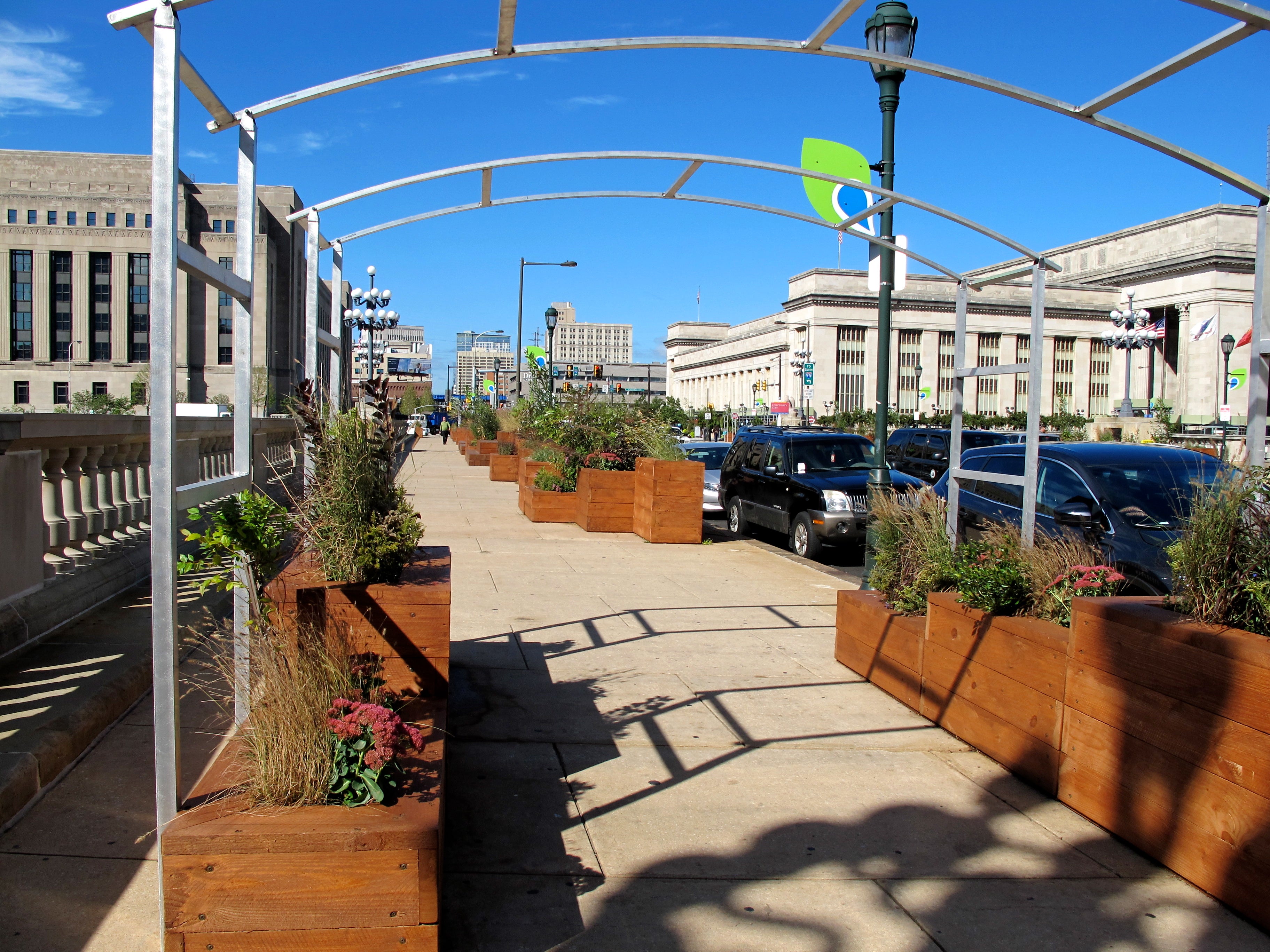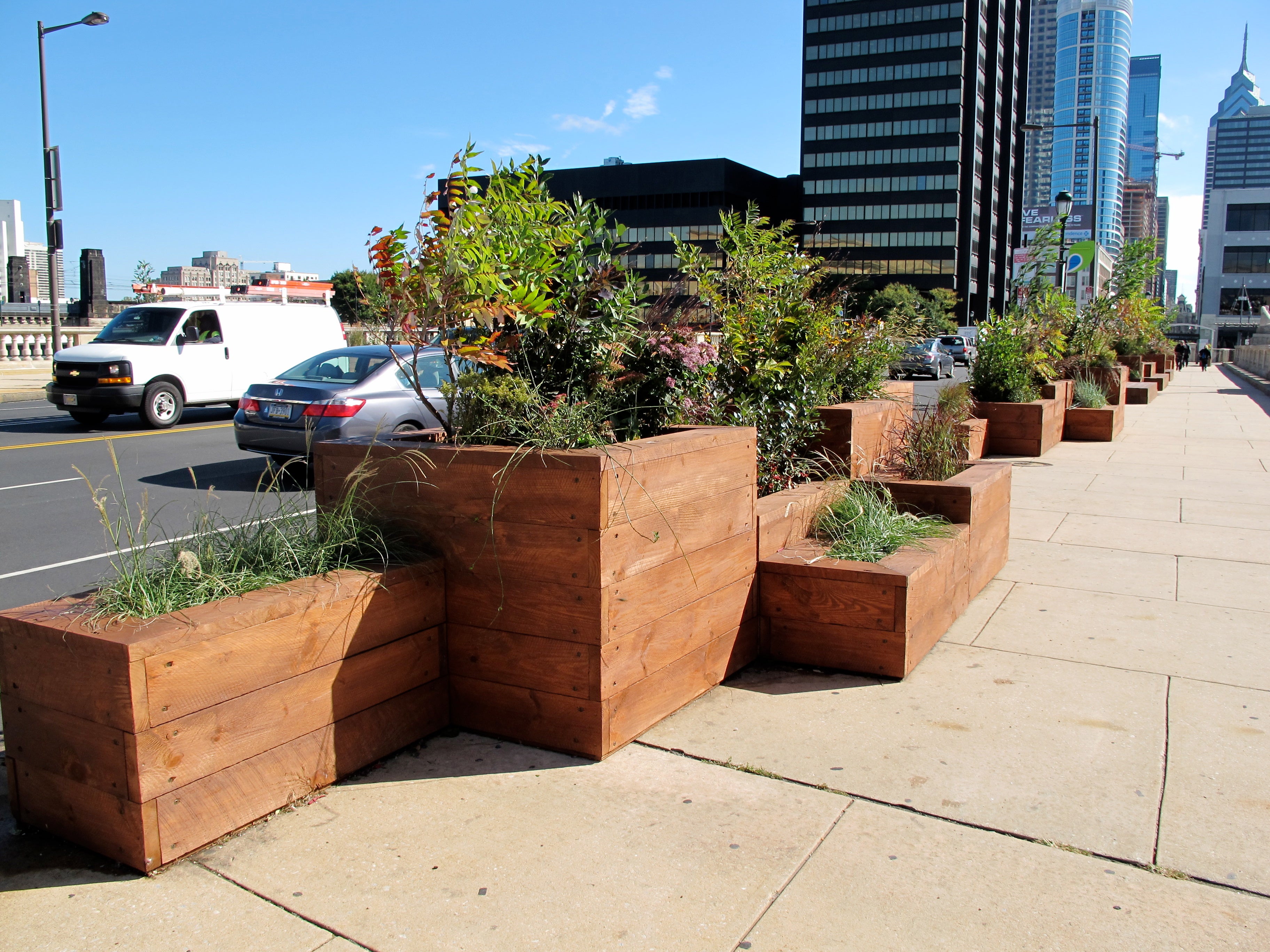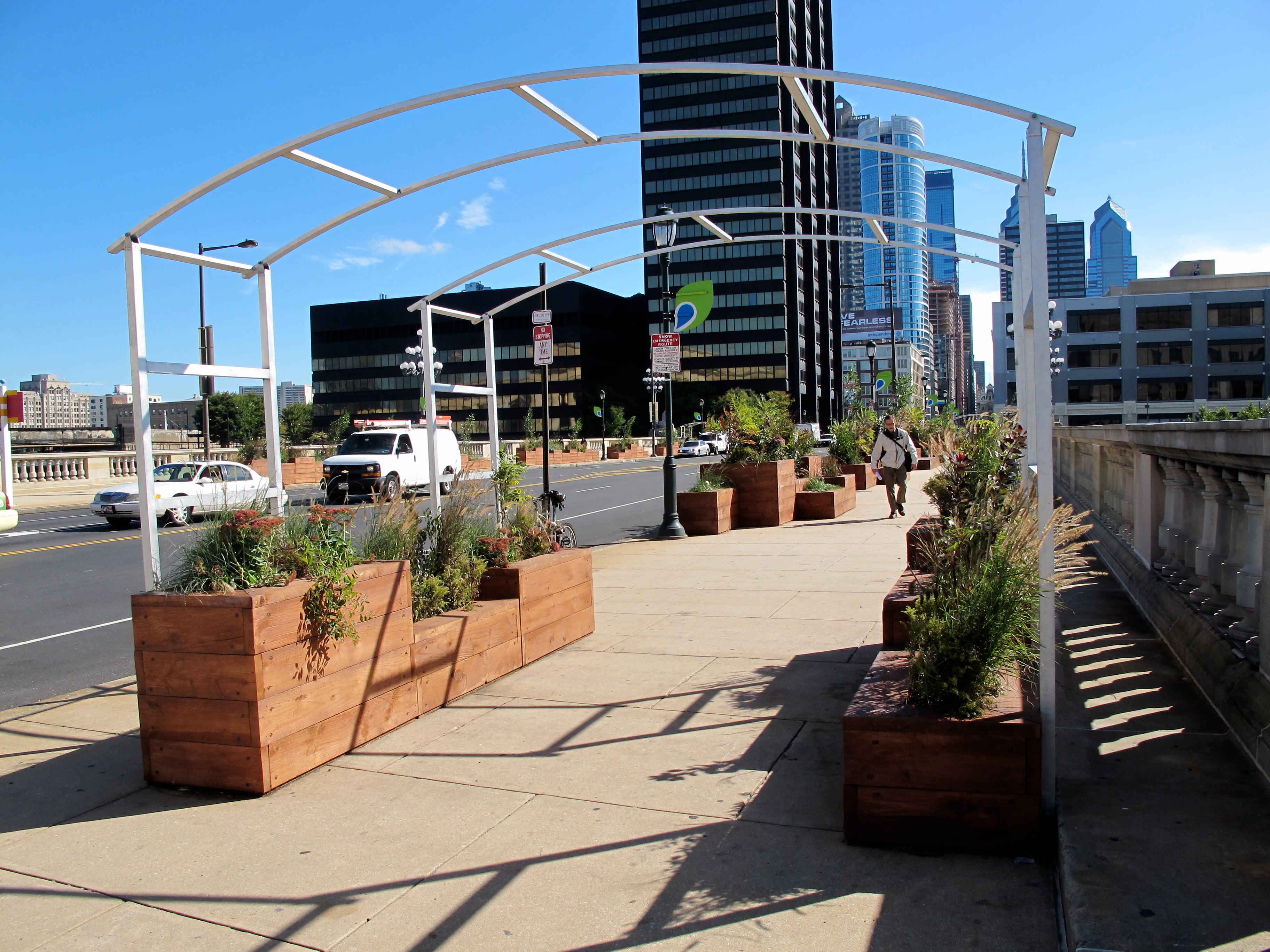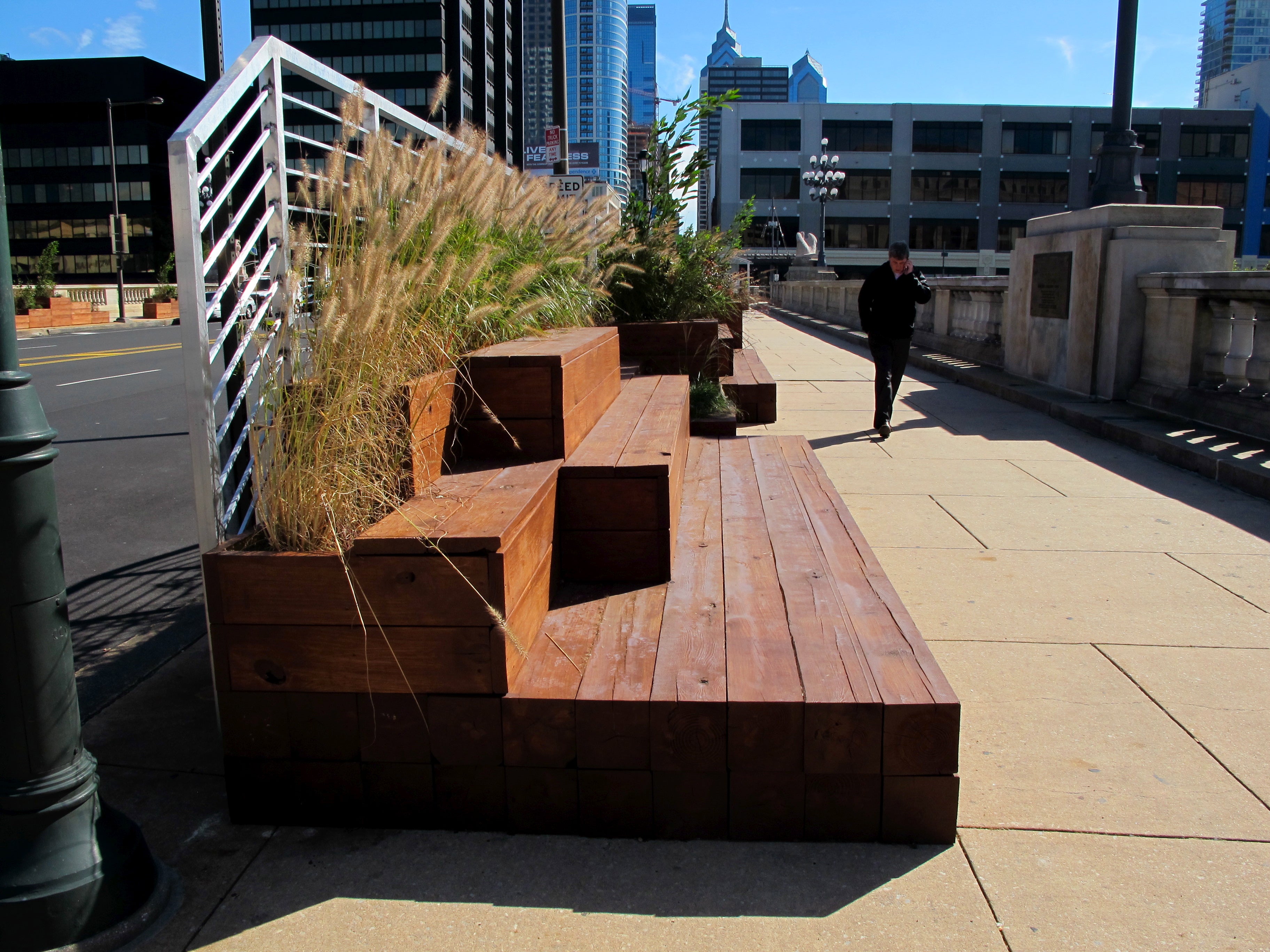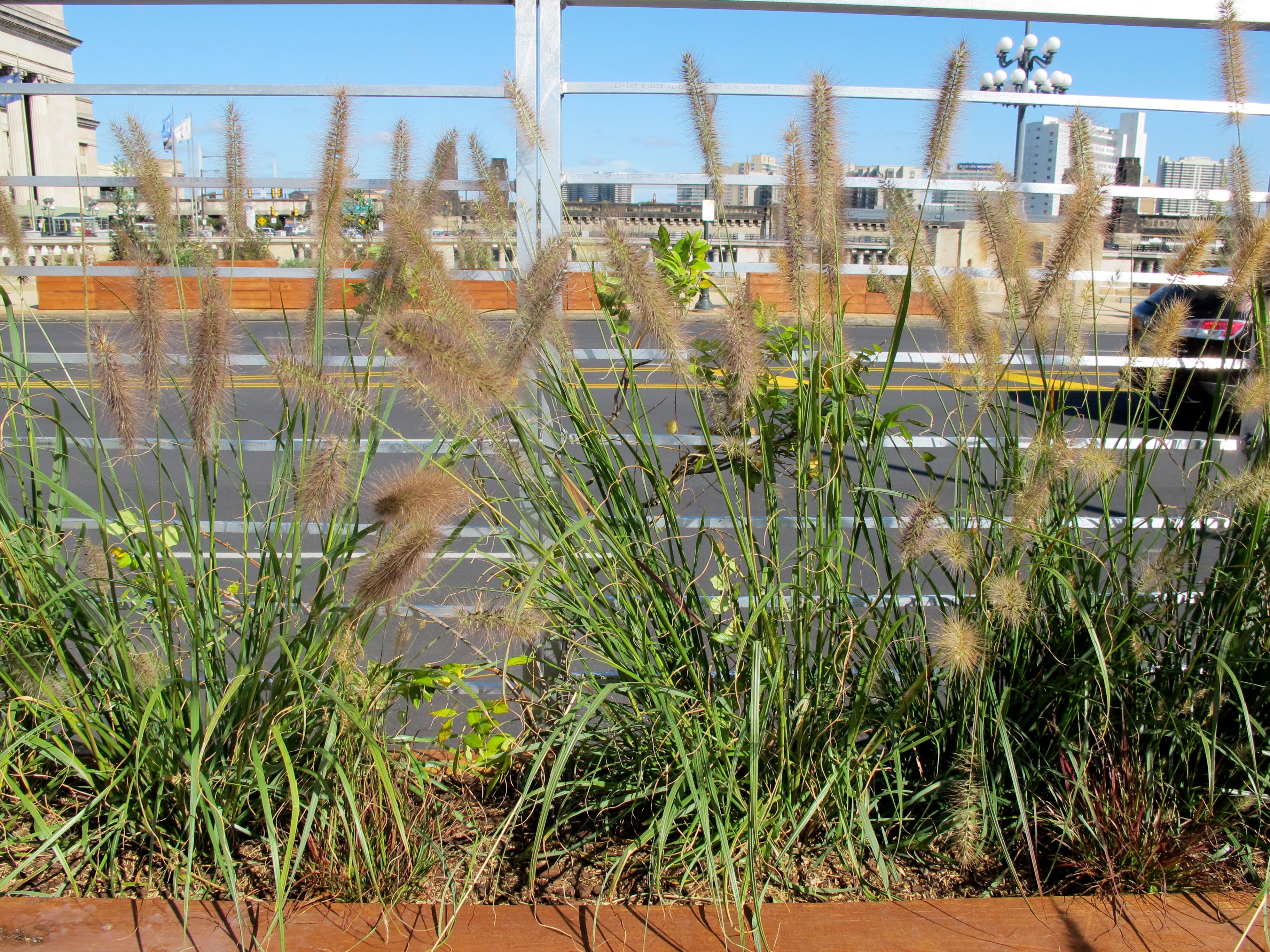Softening Market Street Bridge’s sidewalks
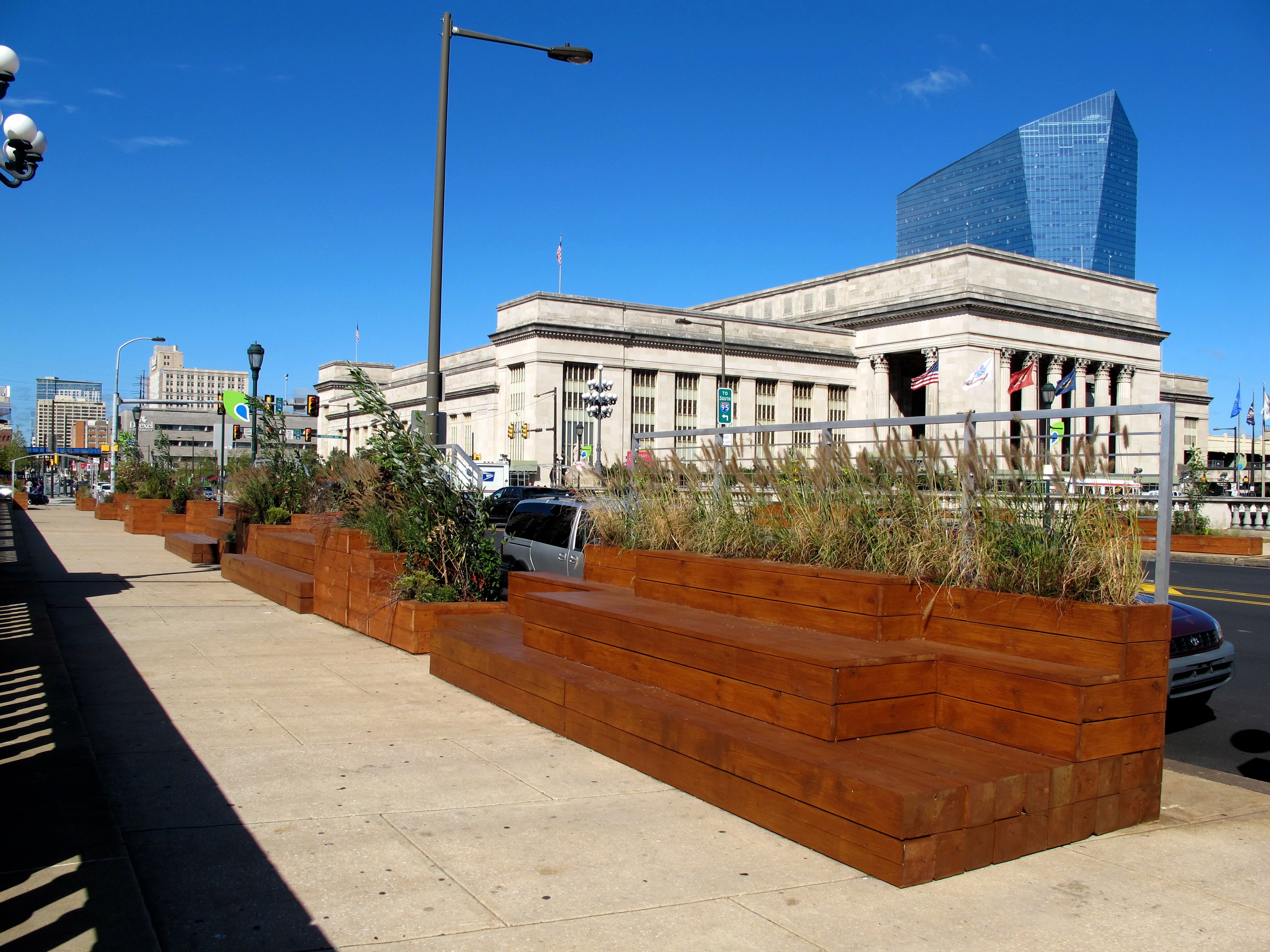
More than six thousand people walk across the Market Street Bridge every day, going to work, going to school, heading in or out of 30th Street Station. In the last month that passage has become decidedly more pleasant with the addition of 120 custom-built planters dividing the wide sidewalk from the roadway.
The installation marks a rare public space collaboration between University City District (which manages The Porch at 30th Street Station), Center City District, and Schuylkill River Development Corporation, aimed at creating a stronger, more attractive pedestrian link between Center City, University City, and the Schuylkill River Trail.
Improving the pedestrian environment on the Market Street Bridge had long been on University City District’s wish list. They sought funding, at first, for a project on the bridge in advance of the 2016 Democratic National Convention. But additional funding was secured this summer with the goal of completing a project before the papal visit. The total construction budget was $500,000, funded primarily by the William Penn Foundation and Joanna McNeil Trust.
The bridge’s design is a restrained 1930s interpretation of muted classicism, with flourishes like the grape cluster lights, stone eagles (salvaged from New York City’s demolished Penn Station), and carved faces overlooking the river. A standard-issue state bridge, this is not. But PennDOT controls Market Street Bridge, so approval at the state level was required for the planter project.
PennDOT’s biggest restriction: weight. The project could not add more than 100 pounds per square foot to the bridge.
Groundswell Design Group was enlisted to complete the project within a matter of weeks, and was charged wtih designing something that felt substantial in the lightest-weight way possible. Though the wooden planters don’t look light they are not solid: They have false bottoms and a thin planting area at the top. By contrast, the slim metal pergolas at each end of the bridge sidewalk, meant to signify a gateway, look so light that they feel out of scale given the heavy mass of the bridge. Hopefully this effect will be diminished once the wisteria being trained to climb the pergolas takes hold.
Groundswell is also the firm behind the most recent iteration of The Porch, and the bridge’s new look is in many ways an extension of that space’s aesthetic. In addition to a visual link between those spaces, the objective was to create a “softening effect” from what can be a windswept experience, said Nate Hommel, director of planning and design for University City District. The designers didn’t want to compete with the bridge’s stone details, so Hommel said they opted to “put all the energy on the curbside…. and push people closer to the parapet edge” for an experience more focused on the river views than vehicular traffic.
“Our goal was to really enhance the pedestrian experience from the perspective of the people walking across the bridge,” said Hommel. “We didn’t want to overload the bridge with seating because we weren’t sure how it would be used,” though he adds, there are a couple of spots stop and take in the view.
To ensure the planters remain well kept, University City District’s grounds crew will tend the plantings, while Center City District crews will take on cleaning and graffiti removal. It’s the first time Center City District and University City District have executed and planned for public space upkeep collaboratively.
Since PennDOT intends to redeck the bridge in the coming years, Hommel said the new bridge installation should be in place for at least two years. The planters were designed to be movable so they could be repurposed elsewhere, possibly to another bridge, when construction happens.
Maybe when the bridge is redecked, there will be an opportunity to explore ways to more permanently enhance this space for pedestrians. Maybe this installation is the start of that conversation.
WHYY is your source for fact-based, in-depth journalism and information. As a nonprofit organization, we rely on financial support from readers like you. Please give today.



